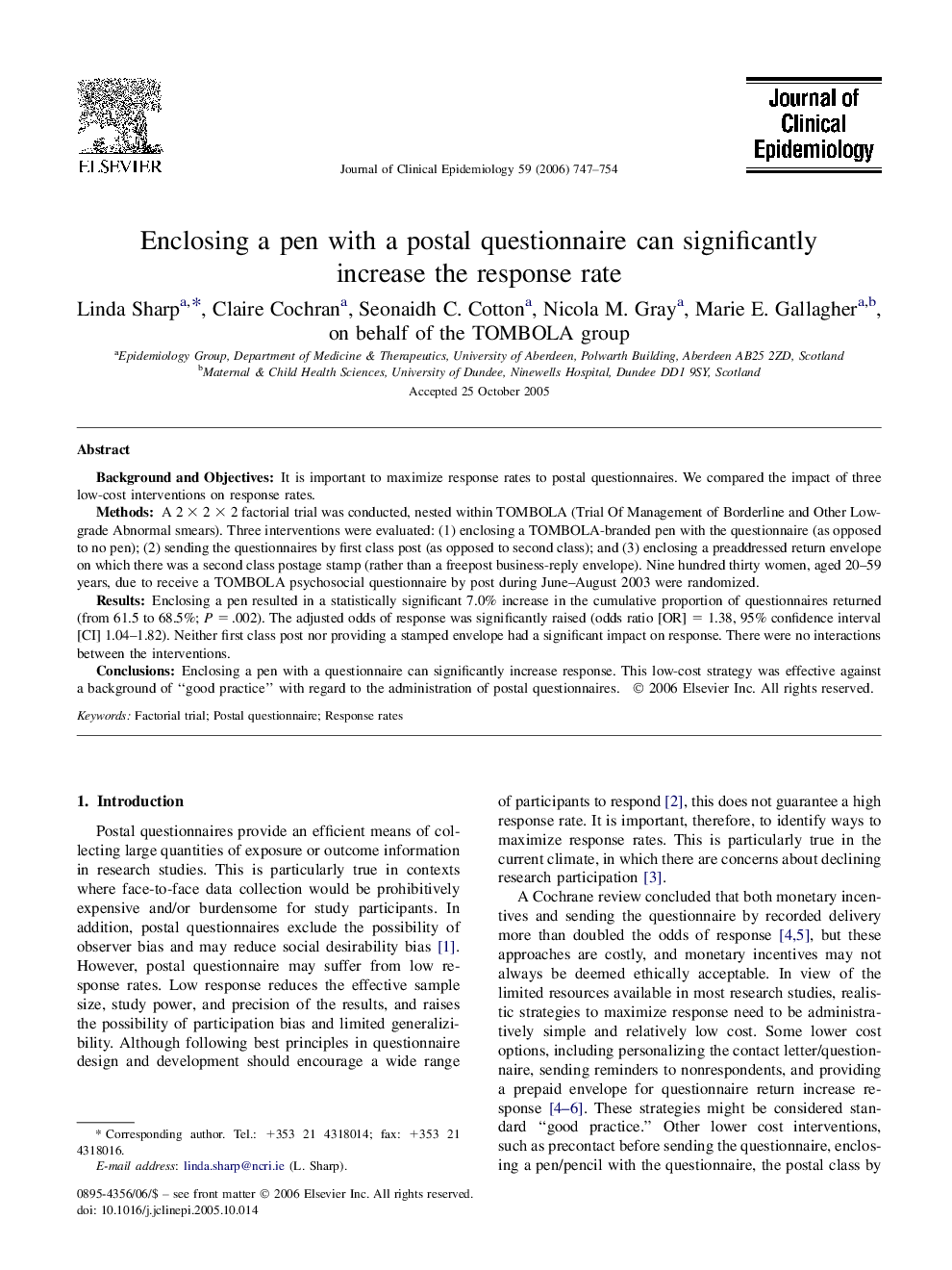| Article ID | Journal | Published Year | Pages | File Type |
|---|---|---|---|---|
| 1083959 | Journal of Clinical Epidemiology | 2006 | 8 Pages |
Background and ObjectivesIt is important to maximize response rates to postal questionnaires. We compared the impact of three low-cost interventions on response rates.MethodsA 2 × 2 × 2 factorial trial was conducted, nested within TOMBOLA (Trial Of Management of Borderline and Other Low-grade Abnormal smears). Three interventions were evaluated: (1) enclosing a TOMBOLA-branded pen with the questionnaire (as opposed to no pen); (2) sending the questionnaires by first class post (as opposed to second class); and (3) enclosing a preaddressed return envelope on which there was a second class postage stamp (rather than a freepost business-reply envelope). Nine hundred thirty women, aged 20–59 years, due to receive a TOMBOLA psychosocial questionnaire by post during June–August 2003 were randomized.ResultsEnclosing a pen resulted in a statistically significant 7.0% increase in the cumulative proportion of questionnaires returned (from 61.5 to 68.5%; P = .002). The adjusted odds of response was significantly raised (odds ratio [OR] = 1.38, 95% confidence interval [CI] 1.04–1.82). Neither first class post nor providing a stamped envelope had a significant impact on response. There were no interactions between the interventions.ConclusionsEnclosing a pen with a questionnaire can significantly increase response. This low-cost strategy was effective against a background of “good practice” with regard to the administration of postal questionnaires.
